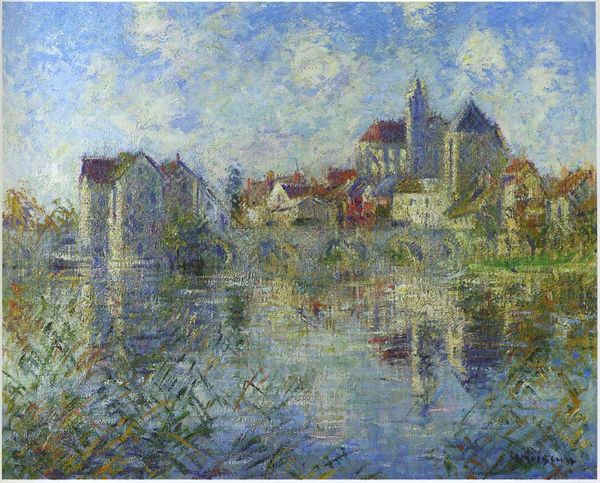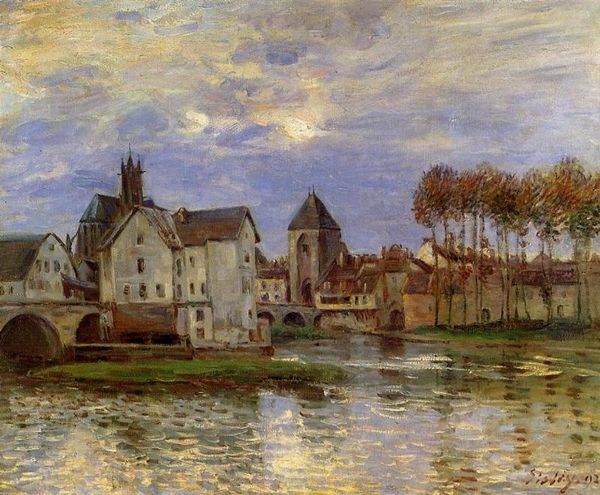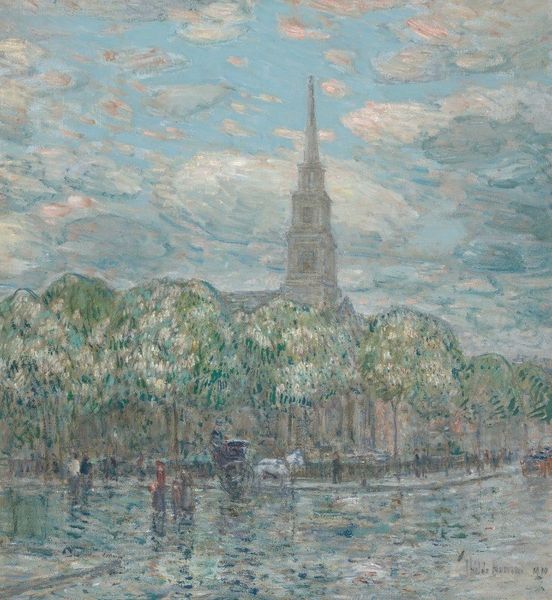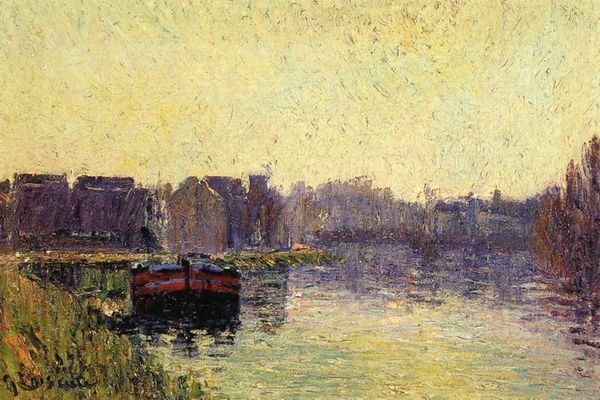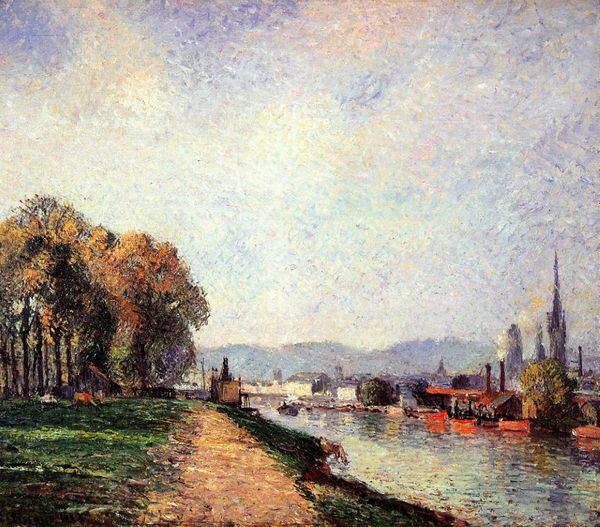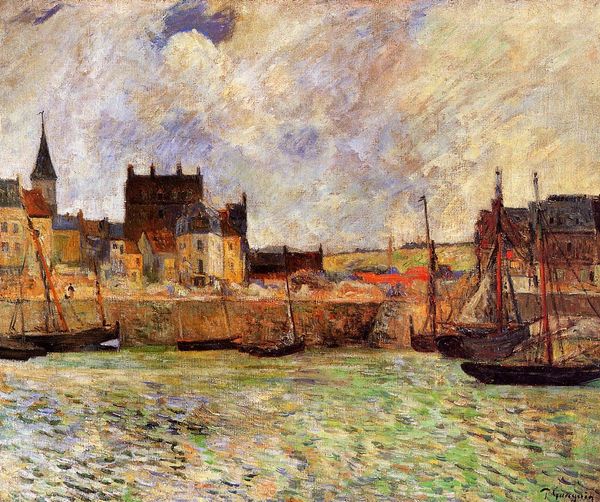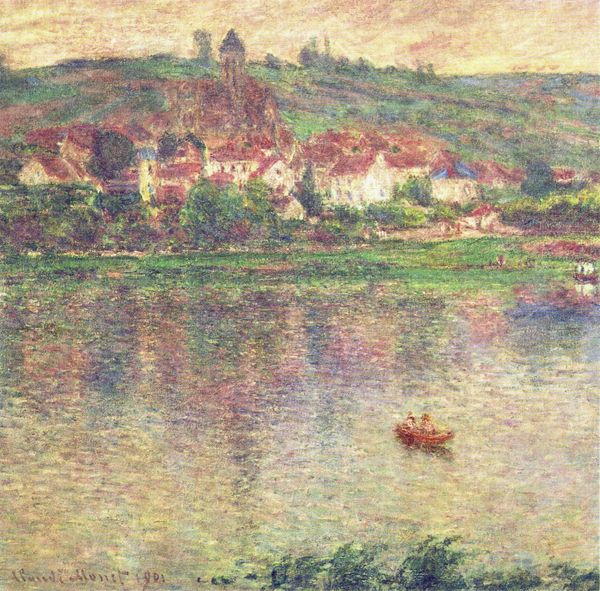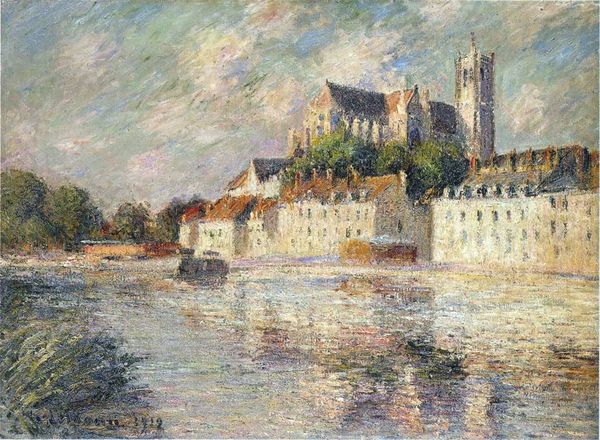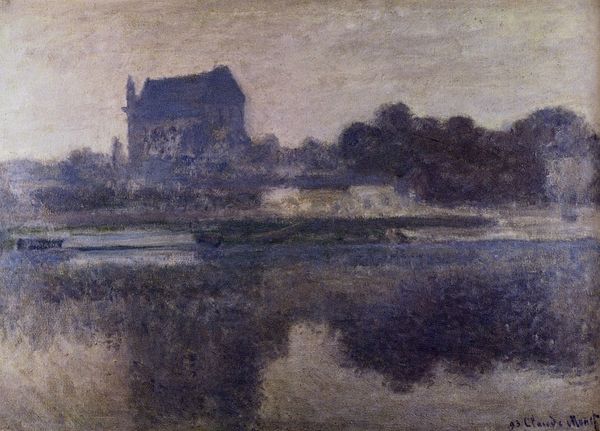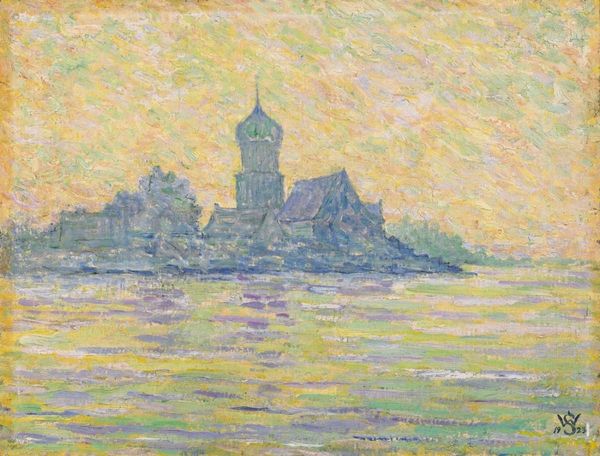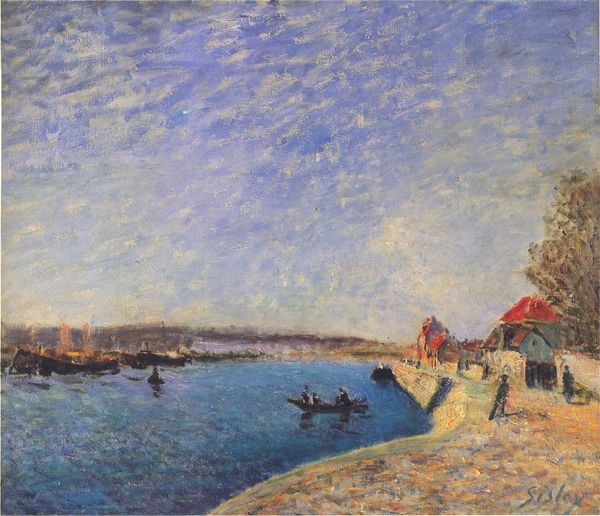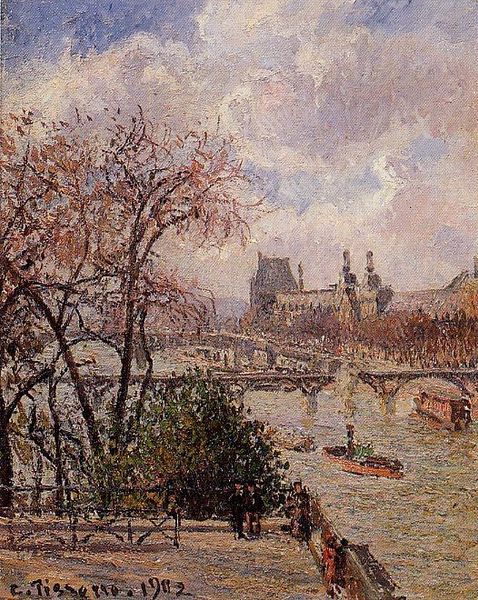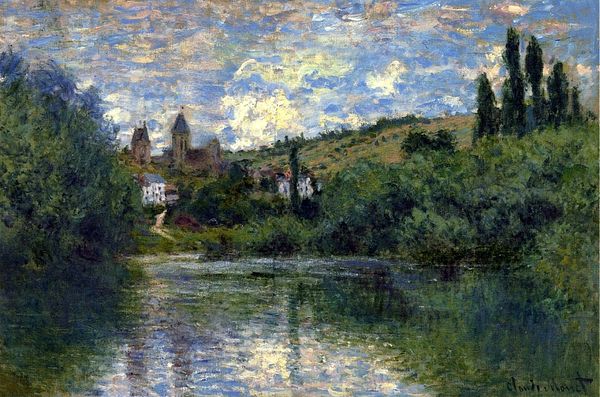
Dimensions: 54 x 67 cm
Copyright: Public domain
Editor: This is Theo van Rysselberghe's "Holy Cross Church at Ixelles at Night," created in 1886, using oil on canvas. It’s striking how the hazy, almost blurred effect makes the church feel both imposing and dreamlike. What historical context do you bring to this piece? Curator: Well, this painting comes at a fascinating intersection of religious architecture and emergent urbanism. The imposing church is juxtaposed against the burgeoning city, a contrast heightened by the impressionistic style that softens the harsh realities of urban growth. Consider the symbolism inherent in depicting a church, traditionally a symbol of stability, almost dissolving into the transient cityscape. What do you make of that relationship? Editor: I guess I hadn't considered the church as an "establishment" fighting against something. It makes me think about how rapidly the urban landscape changed and impacted long-standing cultural touchstones, not only in Brussels but across Europe at that time. It suggests the push-pull of tradition versus modernity. Curator: Exactly. The “dissolving” effect as you mentioned, can also be linked to the anxieties of the rapidly changing social order and a perceived erosion of traditional values. Notice also how the lights of the city compete with the presumed divine light emanating from the church. It raises questions, doesn’t it, about the public role of religion in an increasingly secular society? Editor: That's a point I had completely missed. So, rather than simply a pretty cityscape, it's actually posing some important societal questions through its visual choices? Curator: Precisely. Art often serves as a visual record of societal anxieties and transitions. This work speaks volumes about the dialogue - and at times, conflict - between established institutions and new social realities. It gives food for thought on how spaces designated to reflect stability such as religious centres, are always already caught in social-political tides. Editor: This has given me a completely different lens to appreciate this work. I thought the scene looked beautiful and evocative, but seeing the cultural undercurrents takes it to another level. Curator: Indeed. It encourages us to look beyond aesthetics and consider the social forces shaping both the artwork and its reception.
Comments
No comments
Be the first to comment and join the conversation on the ultimate creative platform.
